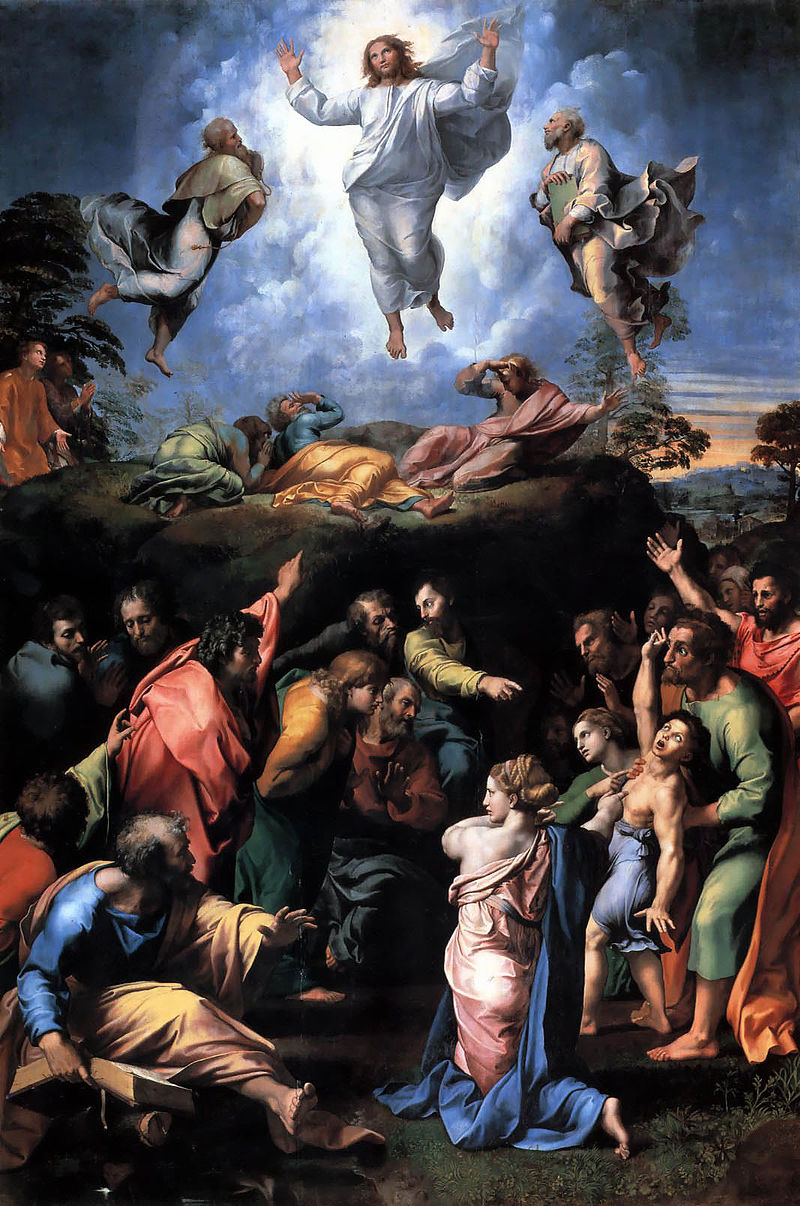[Greek] μετασχηματίζω (metaschēmatizō), [Latin] transformare, [Latin] transfigurare: to change in fashion (or appearance), to disguise, to transfigure, to transform, to change the form of; 1Cor.4:6, 2Cor.11:13-15, Php.3:21

The Transfiguration: painting by Raphael (1520). Php. 3:21 makes reference to that Jesus will change our lowly bodies to conform to His glorified body.
Background information:
Greek Hellenism: This term means to transform, to alter, and to change the outward appearance of a person or thing. Plato’s Laws 10.903e states “For if one were to shape all things, without a constant view of the Whole, by transforming them as, for instance, fire into water, instead of merely converting one into many or many into one, they would be countless in number in such a system of transformation.” Plutarch’s Agesilus 14 states “The Persian viceroys and generals, who had been insufferably cruel, and had reveled in wealth and luxury, now fearful before a man who went about in a paltry cloak. And at one brief and laconic speech from him they conformed themselves to his ways.”
Old Testament: This term means to transform and to disguise. Philo makes reference to what changes into corruption, transforming into a god, and transforming a temple into a pagan idol. Josephus makes reference to David changing his outward appearance, disguising Jeroboam’s wife, and changing one’s habits. But as though transformed by fire into immortality, he nobly endured the rackings (4Macc.9:22). So he disguised himself, putting on other clothes, and set out with two companions (1Kgs.28:8).
New Testament: This term means to disguise oneself, to change one’s attitude, and to change oneself. Paul calls upon the Corinthians to change their worldly attitudes into one of a Christian attitude. Paul and Apollos provide them with an example of the true attitude of a Christian. The deceitful workers masquerade as false apostles. These false apostles hide their true being by their outward appearances. Christians, although having the Holy Spirit, still live in mortal flesh. At Christ’s coming, He will change our lowly bodies to conform to His glorified body.
Scripture:
“I have applied these things to myself and Apollos for your benefit, brothers, so that you may learn from us not to go beyond what is written, so that none of you will be inflated with pride in favor on one person over against another.” 1Cor.4:6
Paul calls upon the Corinthians to look at Paul and Apollos as examples of the proper attitude of a Christian. The Corinthians must follow Paul and change from their vain and false wisdom.
“For such people are false apostles, deceitful workers, who masquerade as apostles of Christ. And no wonder, for even Satan masquerades as an angel of light. So it is not strange that his ministers also masquerade as ministers of righteousness. Their end will correspond to their deeds.” 2Cor.11:13-15
These deceitful workers disguise themselves as apostles of Christ. These deceitful workers, like Satan, masquerade as ministers of light.
“He will change our lowly body to conform with His glorified Body by the power that enables Him also to bring all things into subjection to Himself.” Php.3:21
Although believers have the Spirit within them, they still live with the flesh of humanity. At Christ’s coming, their bodies will also share in this divine being.
Conclusion:
Schematic, transformation, transform, transfiguration, transfigure
This term not surprisingly can be found in many contexts and situations. Other nuanced meanings can include changing one’s posture and the configurations of the stars and planets.
In the Old Testament, this term is used infrequently. The Jewish Hellenist philosophers make frequent use of this term. 4 Maccabees introduces a spiritual dimension of this term. Martyrdom is regarded as the victory of incorruptibility. The martyr is transformed by the fire into incorruptibility.
It is interesting that the New Testament presents this term in different ways. These include disguising oneself, being transformed in a glorious body, and changing one’s attitude.
A schematic is a design or representation. This term essentially means a changed design or representation.
Here’s to all us of changing for the better!
